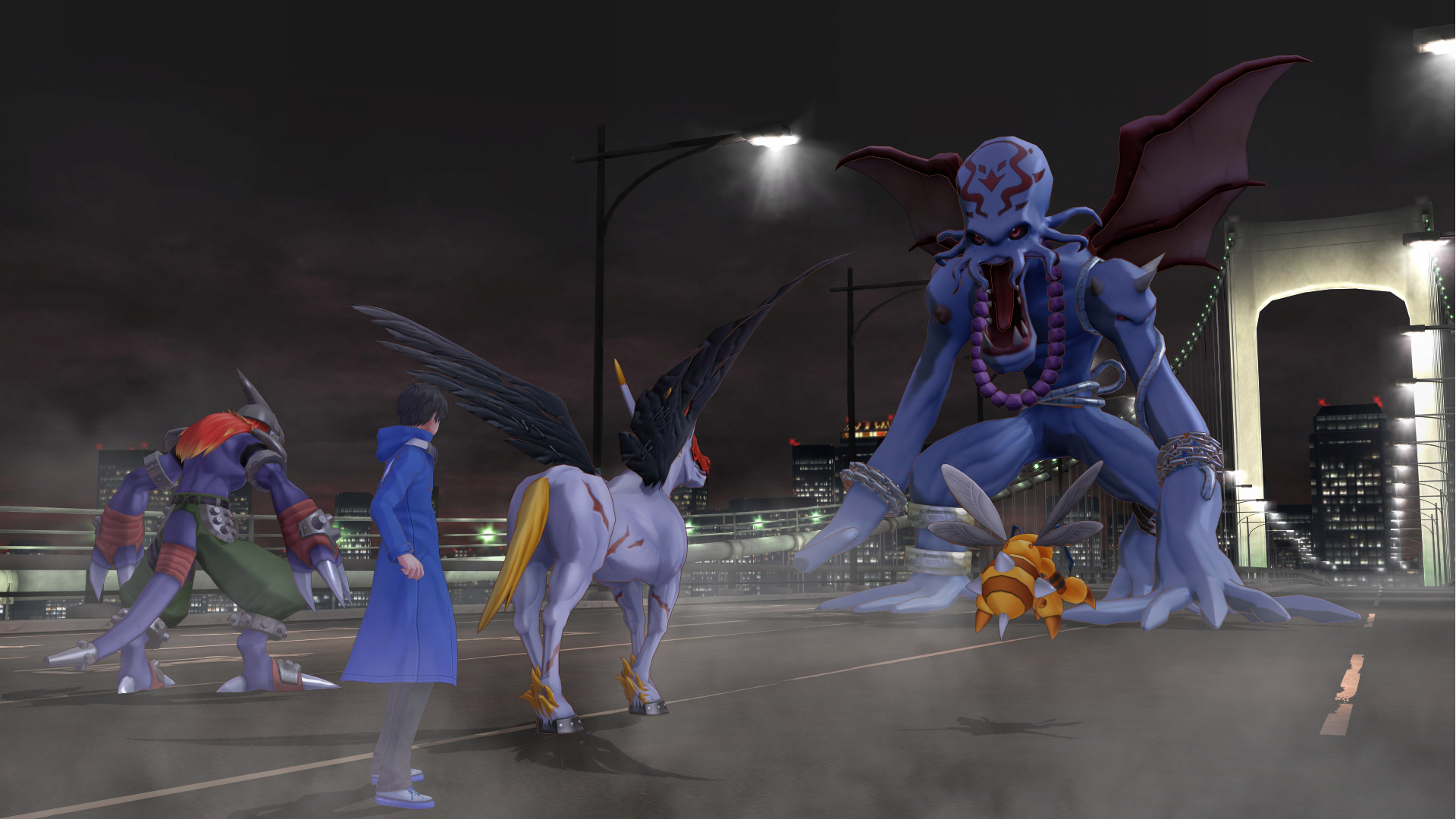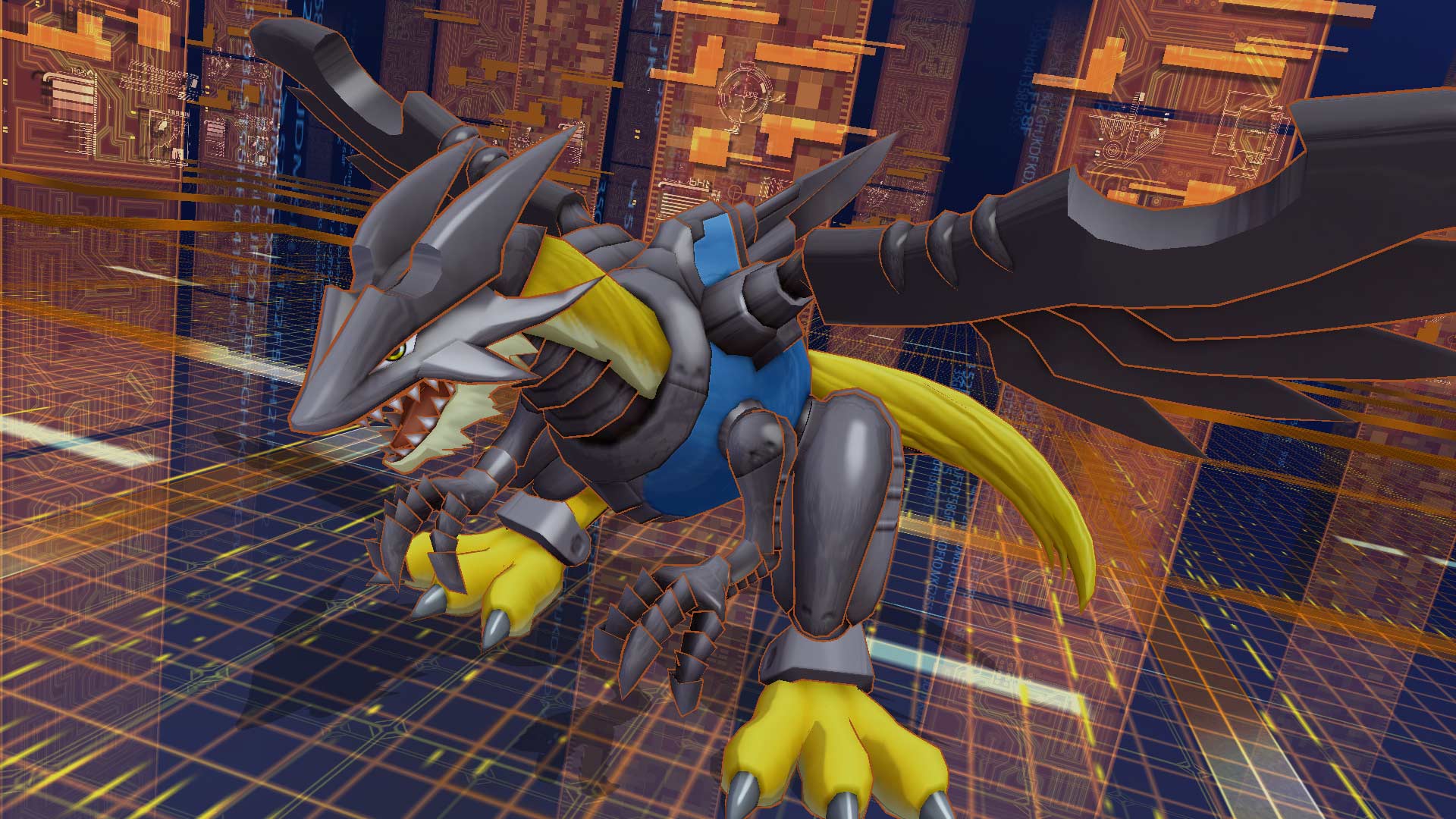Platforms: PS4 (reviewed), PS Vita
Developer: Media.Vision
Publisher: Bandai Namco Entertainment
MSRP: $59.99
Introduction:
I have a confession to make. I am not a Digimon fan. I never watched the anime growing up, never collected the cards, nor played any game in the series to this point. I have, however, been an unabashed Pokemon fan since the days of Red and Blue, so going into this, I thought there was a chance I could come to like it similarly.
While Cyber Sleuth – Hacker’s Memory doesn’t come anywhere close to touching the perfection of the original Pokemon games, I’m happy to say that I rather enjoyed my time farming Digimon, evolving them into bigger and more powerful forms, and building out a rather expansive roster into a juggernaut. The game isn’t particularly demanding in terms of battle, but it doesn’t make itself all that approachable to newcomers.
However, once you can find your footing, you’ll see your battle formations continually rotating and introducing you to new moves, types, and Digimon in ways that actually do it better than Pokemon. There’s something I thought I’d never say.
Here’s what you need to know about Digimon Cyber Sleuth – Hacker’s Memory.

The story isn’t all that welcoming to newcomers.
First and foremost (and I had to look this up), Cyber Sleuth – Hacker’s Memory pretty much assumes you understand the world and how it works, which can be a bit of a barrier to entry. It is also essentially a side story that unfolds alongside the events of original Cyber Sleuth. The game spends a good 2-3 hours fixating on this world to try and set up the story to come, so it’s easy for newcomers to get lost, and frankly is a bit of a turnoff.
In fact, during this time, you aren’t catching (Digi-converting) or raising any additional Digimon, and the characters around you are continually reiterating how important it is to keep growing your roster. It gets to the point where you almost feel like you’re doing something wrong, as the game doesn’t always do a good job of communicating whether you are on the right path or not.
The story itself is told through static text panels mixed in with some minor character animation juxtaposed on top of a freeze frame gameplay window. It’s not all that compelling to watch, and for those who aren’t into the game for the story (like me), it can be a little too easy to scroll through the text just to get back to playing and miss an important piece of information about where to go.
That said, there are some things that it does well, particularly in regards to the question of “how to treat Digimon.” Players get their first battle companion by entering a black market where there is a dealer that has three captive Digimon locked in a cage that he intends to sell for profit. Even some of the main characters have their perspectives on the issue, seeing the creatures as mere representations of data, while it’s evident to you that these are lifeforms with an ability to convey emotion and express complex thought. It’s one of those narratives that’s quietly philosophical in a way that doesn’t cram beliefs down your throat.
The protagonist, Keisuke Amazawa, is the typical “strong silent” type who is being guided along by hackers who are more prominent and understand more of what’s at stake than he is. He is not your typical “chosen one” trope that JRPGs lean on far too often, as he is dependent on the people around him to help accomplish a common goal. That set-up is excellent, and on paper, should work as a means of easing the player into the world, it just seemed as though the writers weren’t concerned about that and presumed that their audience would be established Digimon fans. To be fair, they were probably right.

Playing around with different Digimon in battle is legitimately satisfying.
I never thought I’d say this, but if there’s anything that Nintendo’s Pokemon team can learn from Digimon, it’s how to handle a constantly rotating party. Cyber Sleuth grants such freedom to player experimentation that I was consistently impressed by how many different combinations of teams I could assemble. The game has achieved the right balance of grinding out tough teams without leaving Digimon you haven’t touched in the dust. A lot of this revolves around how it handles evolution, which when you unlock the ability to “digivolve” a monster, doing so reverts the beast in question to level one. However, it’s base stats are high enough so as not to make it a liability, and leveling it up is incredibly smooth and comes with a sense that your new monster has loads of untapped potential for you to uncover.
It’s this sort of meta game that keeps your attention focused away from its budget-level presentation and the fact that it essentially reuses a lot of the same assets as its predecessor.

Digimon Story Cyber Sleuth – Hacker’s Memory is overpriced.
It can be tricky to judge a game’s financial worth, as it is mainly subjective. Hardcore Digimon fans will likely have no problem dropping the full $60 on a game, as there is more than 50 hours worth of content. But, for people looking for a new Digimon experience, Hacker’s Memory is anything but.
It’s a bit unfortunate since a lot of the same dungeons are reused, but if you think of the game in the same way that you look at Pokemon Sun/Moon and Ultra Sun/Ultra Moon, the similar correlations can be drawn. What you are getting is a new story with a new protagonist in the exact same place. It just seems like if you’re going to reuse a lot of the stuff you made for a game, you charged full price for, returning players could be rewarded at least somewhat for a game that will have them running through the same places.

Verdict:
The subjectivity in Hacker’s Memory’s worth lies in how much of a connoisseur you are with the Digimon brand. If you can appreciate the small quality of life changes and its side story nature, then you’ll get along with Hacker’s Memory just fine. The game was built with crossplay in mind, as its simplistic presentation has helped the game come in at a small file size (4.02 GB) that can easily be downloaded to a Vita with no problems.
Its story plays around with relatable themes in a world that it doesn’t know how to welcome newcomers to, which is unfortunate. Casual players will likely be turned off by its first few bland hours, but if you can push through, there’s an addictive game loop that can hook you for endless amounts of combinations oodles of hours.









